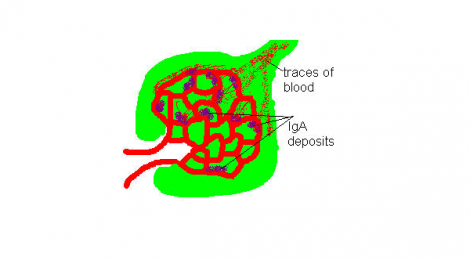
Illustrated Kidney & IgA Nephropathy
This page has been contributed by a high school student attending North High School in St. Paul, Minnesota. She was diagnosed at age 15 (in 1996) with IgAN and prepared this page as her contribution to the Internet resources on this condition. We reproduce her very clear and concise presentation here. It’s no small accomplishment to write and illustrate on a complex medical topic with such clarity and brevity.
Marisa Egerstrom’s Illustrated Story of IgAN
Here we’ve got basic anatomy stuff.
See kidneys, see ureter, see bladder. See where blood goes into and out of kidney. (red is blood with oxygen, coming from the heart & lungs, blue is going to the heart and lungs)
Ok, moving right along..
Now it gets a little more complicated. That pink thing is a nephron. There are millions in each of your kidneys. The nephron is the basic unit of filtration.
ZOOM in for an EXTREME CLOSE UP! Ok now hang on to your chairs. The glomerulus is the real important part. So is Bowman’s capsule. The convoluted tubules are for reabsorbing water & stuff.. The blood flows into the glomerulus, and while it’s in the capillaries, all the waste is forced out of the blood into Bowman’s capsule, and it all runs out. That stuff eventually becomes urine.
Here’s what makes me special: see the deposits of IgA antibodies (purple)? They clog up the filtration, so protein and sometimes blood escapes. That’s not good. When you lose too much protein, you get nephrotic syndrome – and that’s not a good condition to be in. One result is you get a lot of water in between your cells. That’s called edema. Usually you can tell if you’ve got some edema because your eyes will be puffy, your legs will be squishy, etc. My nephrologist always reminds me to call right away if my eyes seem puffy.
That is, in a nutshell with very, VERY amateur graphics, what IgA Nephropathy is. Why do deposits form? That’s the great mystery of the disease. Now what happens when you have the deposits is that the tissue can scar, leaving what’s called “crescents”. That’s dead kidney tissue that you can’t get back. When you get enough of your kidneys scarred like that, kidney function decreases. If it decreases enough, you’ve got 2 options: dialysis or transplant. The fish oil is supposed to slow down the progress of the scarring, so you stay healthy longer. Cool, huh?
(whoops better give some credit here: these images were drawn by me, but were inspired by The Human Body In Health and Disease by Memmler, Cohen, and Wood, published by Lippincott-Raven Publishers. Great book. Birthday present!)
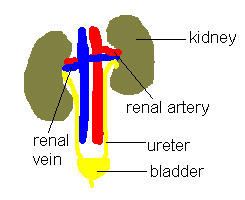
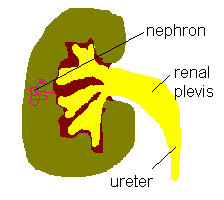
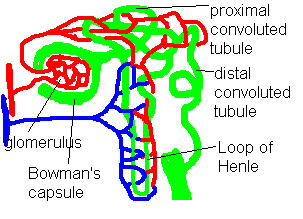
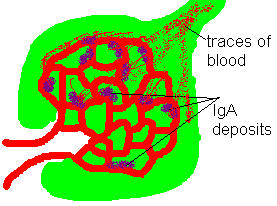
Recent Comments